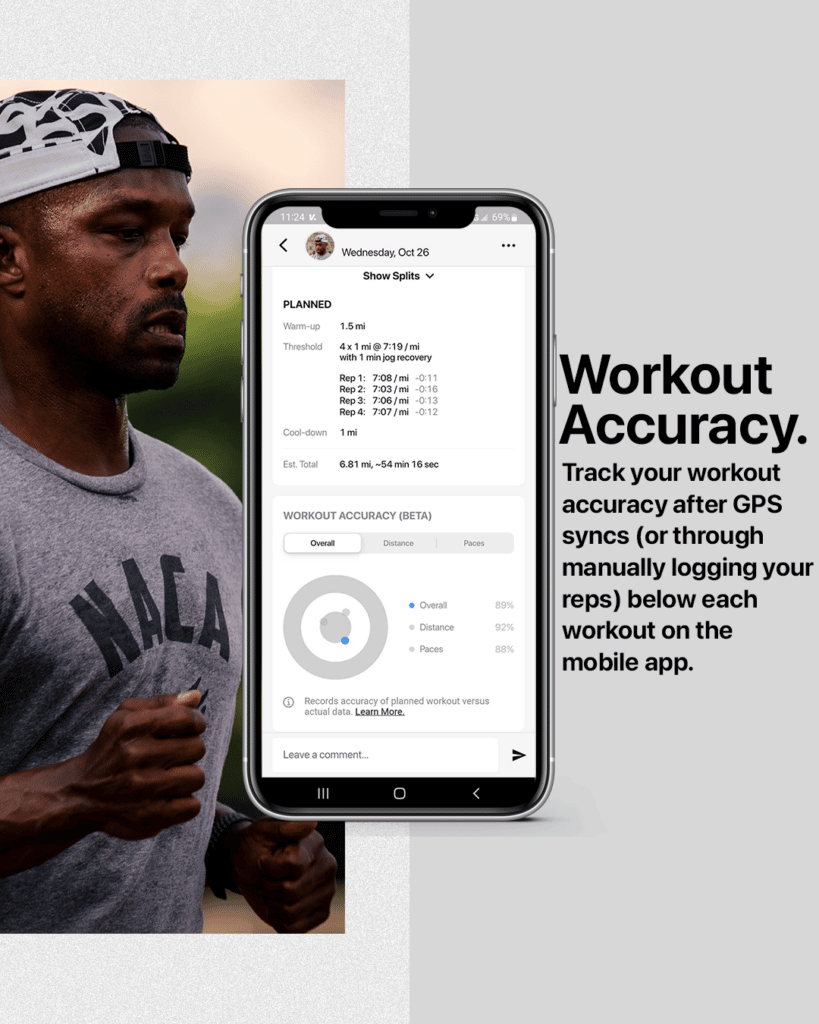
On V.O2 we pride ourselves by being a community of runners that values purpose driven training. To further our mission of helping runners train more effectively towards their goals we’ve released a brand new feature on our app called Workout Accuracy. Part of purpose driven training is not just understanding the objective of each workout, but also aspiring to be accurate in your execution.
Here’s What’s New
- We now analyze GPS and automatically log reps with the planned workout so you don’t have to comb through the GPS split data (available on mobile and mobile).
- We make the data very clear in terms of what the difference (+ or -) was between planned versus actual on each split.
- We score your accuracy overall (distance + pace) and distance and pace separately. ?
To dig deeper on how the scoring works read more.
The Accuracy Effect
While testing and collecting feedback we’ve found that by bringing this data more to the surface it helps athletes become better pacers and it helps coaches more quickly detect when athletes are overtraining (or when they’re not getting as much out of the planned session as they could have).
You could call it the “anti-social media” effect. For instance, on Strava sometimes athletes are thinking about their friends/followers seeing the results in the middle of their workout. That oftentimes leads to overtraining, whereas on V.O2, athletes are motivated by accuracy of training (and sometimes by fear of their coach yelling at them for going too fast).
Overall, striving to have better command of pacing and more consistency when executing planned workouts can have a huge impact long term.
Setting Reasonable Expectations
Training smarter and with a purpose on each workout does not mean setting expectations that runners are robots and must be 100% accurate. Obviously, weather and off days in general (even the pros have them), are not accounted for in this iteration. This feature is simply analyzing the GPS and comparing it to what was planned. We cannot stress enough that training effectively also includes knowing when to back off or scrap a workout if you’re not feeling well.
This feature is not useful in assessing the execution of the workout on “off” days, other than providing more data that could help make adjustments in the future; whether it’s how to adjust for weather or maybe your current VDOT is too aggressive and needs to be updated to better reflect your current fitness.
For instance, let’s say your Threshold pace is 8:00/mi. First, VDOT assumes reasonable conditions in order to execute the pace and reap the physiological benefits of the workout. Secondly, Threshold is typically around 88-92% of HR max so the VDOT pace is a target trying to get you in the right range (with reasonable conditions) for as much of the workout as possible. Aspiring to be more accurate takes understanding the purpose and knowing the proper effort too.
